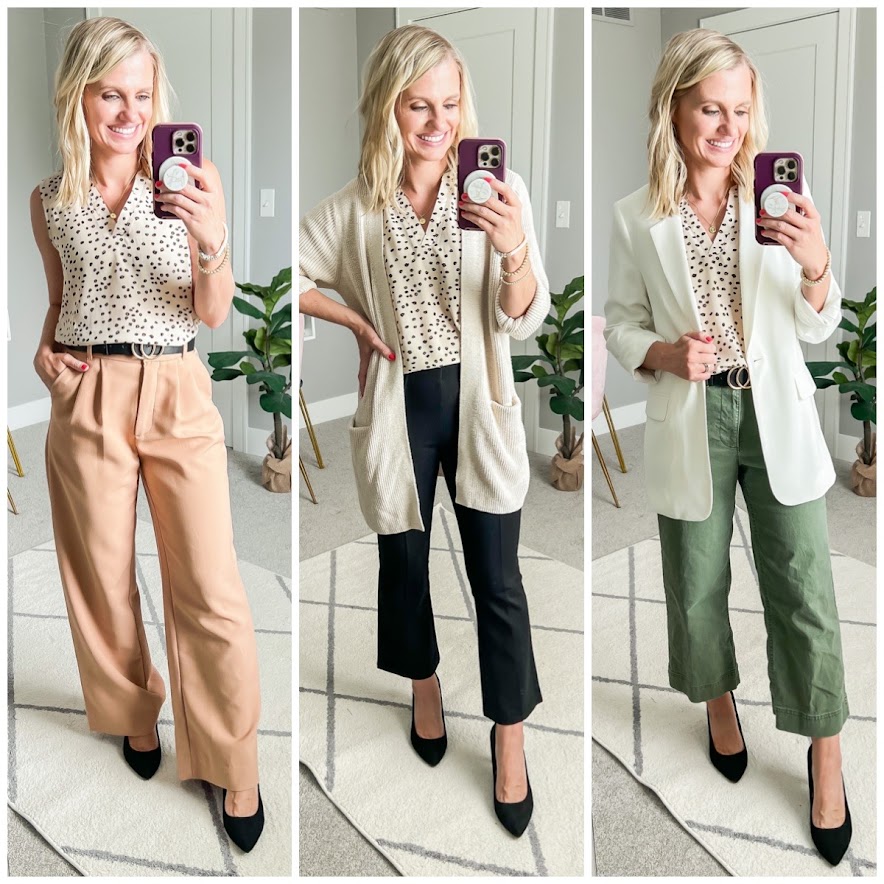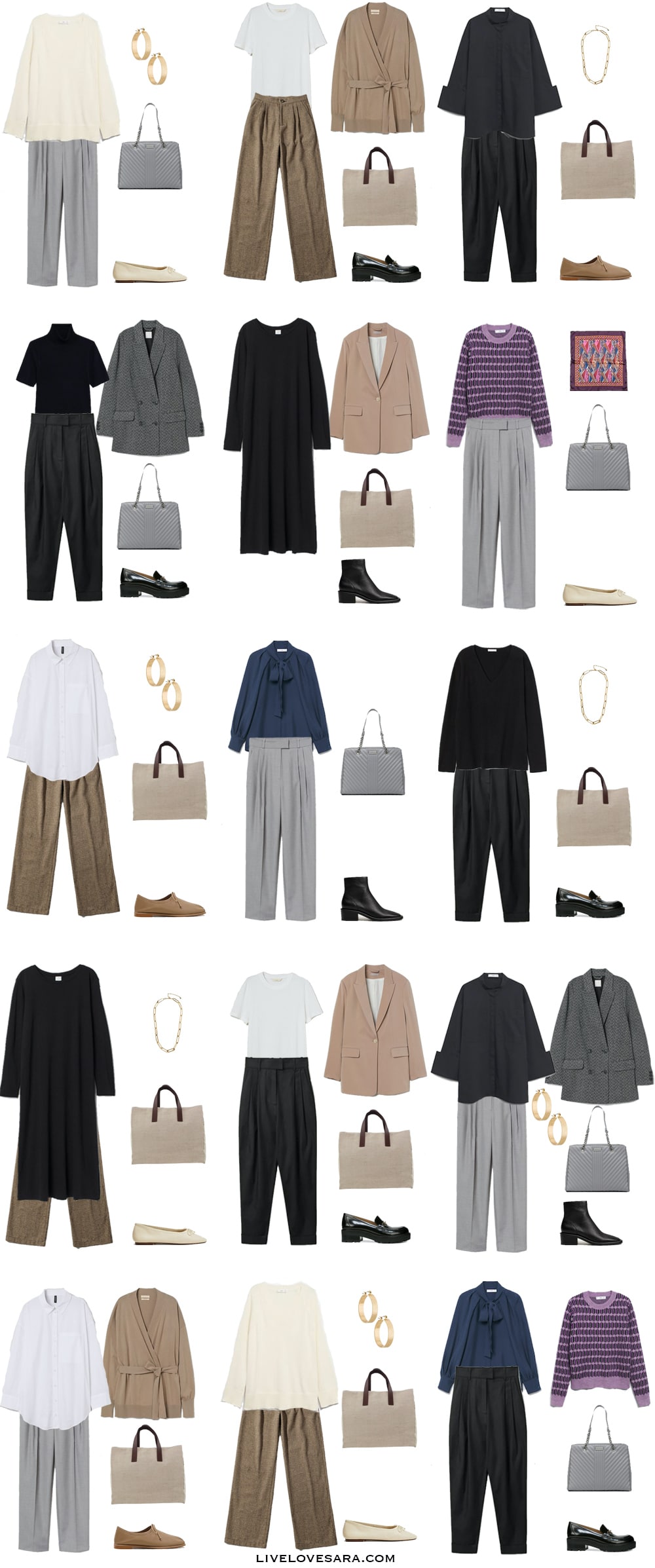I hope the past 18 months have instilled a newfound respect for teachers everywhere. It’s a demanding job—one I’ve always recognized as challenging—but this past year has truly elevated your dedication to new heights. I tip my hat to you! So, if you’re a teacher looking to enhance your work wardrobe while keeping your finances in check, you might find the following five steps beneficial for your capsule wardrobe journey.
How to Build a Teacher Capsule Wardrobe

Step 1: Take Inventory of What You Own
Begin by thoroughly examining your entire wardrobe. Go through each item with a fine-tooth comb and set aside anything that could be useful for your work wardrobe. You might be surprised by how many versatile pieces you already possess when you approach your closet with a fresh perspective.
This step may need to be repeated several times. During your first pass, include anything you think you could potentially wear; with each subsequent review, be a bit stricter in your decision-making.
Once you’ve completed this step, keep these selected pieces separate from the rest of your clothing as you move on to the next phase.
Step 2: Identify Your Color Palette
After you’ve set aside your selected pieces, take a moment to examine them for any existing color themes or palettes. If you don’t notice a cohesive color scheme, this is the time to decide on your colors.
A successful capsule wardrobe requires some level of cohesiveness; all your pieces should work well together to create a functional collection. Without this, you’ll end up with a mismatched assortment of clothing.
I usually start with a neutral base for my wardrobe, adding color through various items and accessories. A neutral foundation is easy to wear and simplifies the process of getting dressed.
Any pieces that don’t fit within your chosen color palette can be removed and returned to your other clothes. This step should help streamline your initial selections and create a more cohesive wardrobe.
Step 3: Consider Your Climate
It’s essential to factor in your local climate when curating your capsule wardrobe. Determine which items you need to include to ensure it’s well-rounded and suitable for where you live.
For instance, while I’ve included a trench coat, I would swap it out for something heavier in a fall and winter capsule wardrobe, along with a pair of winter boots as the weather gets colder.
I didn’t include those winter pieces in my initial selection because, while stores are transitioning to fall, the winter gear isn’t available yet. That’s perfectly fine; a capsule wardrobe doesn’t have to be complete from the start. It’s a continuous work in progress that you can tweak as your style and lifestyle evolve.
I’m a pen-and-paper person; I find that writing things down helps me process ideas better. In this step, I recommend making a rough list of the items you want to include in your seasonal capsule. This way, you’ll have a handy reference to fill any wardrobe gaps as you continue to develop your collection.
Step 4: Narrow Down Your Selections
At this stage, you should have a general idea of what your capsule wardrobe includes or will include. Now it’s time to refine your choices even further.
Start by determining how many pieces you want in each category. For example, do you think having 4-5 bottoms is appropriate? Next, sift through your collection of black pants and decide which pair or two to include.
Consider your options: Can you wear jeans? If so, which pair is the most suitable for work?
Remove any extras or unnecessary items from your selection to keep your capsule streamlined and functional.
Step 5: Identify and Fill Wardrobe Gaps
In this step, you’ll determine any wardrobe holes you may have. By now, you should have a condensed selection of clothing that forms the basis of your capsule wardrobe. Filling these gaps will help you round out your collection.
Remember, this can be a gradual process, allowing you to find the right pieces over time. Since a capsule wardrobe is meant to be small and intentional, taking your time is perfectly normal.
This is also the creative part! Start planning out as many outfits as you can with the pieces you’ve set aside. Creating a visual layout will help you identify any additional items you might want to add to complete your looks.
Let your creativity flow, and whenever you identify a wardrobe gap—whether it’s something you wish you owned or a piece you think would enhance your outfits—make a note of it.
Completing the steps from one to five should take only a few hours. Once you’ve identified your wardrobe holes, it’s time to start filling them.
Considering that many teachers work with a budget, I suggest beginning your search for pieces secondhand. I’ve had great success on Poshmark (Poshmark.ca in Canada) lately; I found a stunning Zadig & Voltaire blazer at a steal!
Other excellent options include eBay and Thredup. Madewell has teamed up with Thredup to create Madewell Forever, where you can find used Madewell jeans at a fraction of the original price.
Don’t forget to check out your local thrift stores, vintage shops, and consignment boutiques—there are always hidden treasures waiting to be found.
Sales racks aren’t just for last season’s trends; you can often score classic pieces that never go out of style. Blazers, button-ups, loafers, and sweaters are all wardrobe staples that you’ll wear season after season. If you find one at a bargain, grab it while you can!
To help illustrate the versatility of this wardrobe, I’ve put together a selection of outfits. I aimed to steer clear of the traditional pieces often included in teacher capsules, as many of those looks are becoming dated—especially the infamous “alimony cardigan.” There are countless other options out there, and I’m sure you can find something even better.
I hope this post inspires you to build a work capsule wardrobe, starting with the foundation of pieces you already own.
Stay safe!









